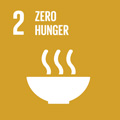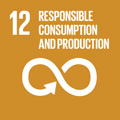- Docente: Marco Dalla Rosa
- Credits: 4
- SSD: AGR/15
- Language: Italian
- Teaching Mode: In-person learning (entirely or partially)
- Campus: Cesena
-
Corso:
First cycle degree programme (L) in
Food Technology (cod. 8528)
Also valid for Second cycle degree programme (LM) in Food Science and Technology (cod. 8531)
Learning outcomes
The aim of course is to provide the knowledge of cereal and bakery products compartment, the technological processes and quality control about raw materials production (flours, semolina, etc.), and their derived products (bread, pasta and bakery products).
Course contents
The cereal production in Italy and in the world. Wheat grain structure, composition and functionality. Proteins: gluten compositions, breadmaking and pasta quality. Carbohydrates: monosaccharides, disaccharides and oligosaccharides, starch, pentosans. Milling process. Quality criteria of milling products. Dough rheology and chemistry: physical dough testing instruments (Brabender farinograph, Chopin alveograph, etc.), influence of physical, chemical factors (work, time, temperature, water, oxidizing agents) on dough properties, influence of flour or semolina components. Breadmaking and pasta quality relationship to properties of cereal components. Technological, chemical and physical aspects of bread and pasta production. Other cereal and starchy products. Extrusion cooking applications. Rice processing.
Readings/Bibliography
Lesson slides and bibliographic material provided by the teacher during the course.
· B. Carrai , Arte bianca (materie prime, processi e controlli), Il Sole 24 ore Edagricole, Bologna, 2010.
· P. Giorilli, S. Lauri, Il pane: un'arte, una tecnologia, Franco Lucisano Editore -Zanichelli, Milano, 1996.
· T. Lanza , Tecnologia e pratica per la produzione dei biscotti, Chiriotti Editore, Pinerolo, 2006.
· G. Mondelli , Essiccazione statica della pasta, Edizioni Avenue media, Milano-Bologna, 2009.
· L. Milatovic, G. Mondelli , La tecnologia della pasta alimentare, Chiriotti Editore, Pinerolo, 1989.
Teaching methods
Lectures and seminars
Practical class in laboratory
Visits to specific companiesAssessment methods
The assessment of learning is through a final written exam of 2 hours, during which it is not allowed to use books, notes, computer media.
The written test will contain a series of multiple choice and open questions. The test aim at assess and verify the skills and knowledge acquired in the issues addressed throughout all the course program. The final grade is of thirty.
Teaching tools
Use of presentations / video on PC and material that will be supply by the teacher and available on the web
Equipments and materials in lab.Office hours
See the website of Marco Dalla Rosa
SDGs




This teaching activity contributes to the achievement of the Sustainable Development Goals of the UN 2030 Agenda.
